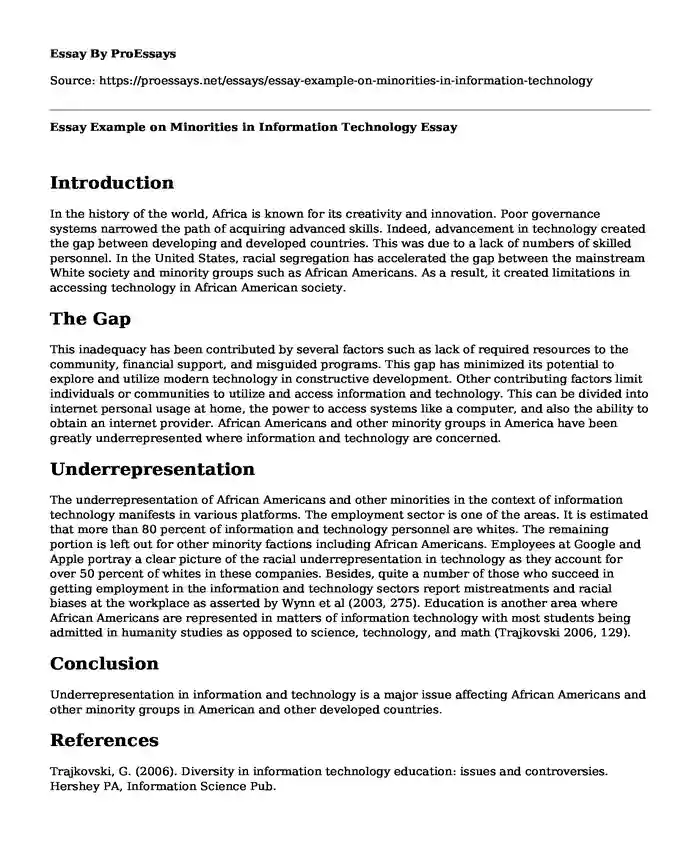Introduction
In the history of the world, Africa is known for its creativity and innovation. Poor governance systems narrowed the path of acquiring advanced skills. Indeed, advancement in technology created the gap between developing and developed countries. This was due to a lack of numbers of skilled personnel. In the United States, racial segregation has accelerated the gap between the mainstream White society and minority groups such as African Americans. As a result, it created limitations in accessing technology in African American society.
The Gap
This inadequacy has been contributed by several factors such as lack of required resources to the community, financial support, and misguided programs. This gap has minimized its potential to explore and utilize modern technology in constructive development. Other contributing factors limit individuals or communities to utilize and access information and technology. This can be divided into internet personal usage at home, the power to access systems like a computer, and also the ability to obtain an internet provider. African Americans and other minority groups in America have been greatly underrepresented where information and technology are concerned.
Underrepresentation
The underrepresentation of African Americans and other minorities in the context of information technology manifests in various platforms. The employment sector is one of the areas. It is estimated that more than 80 percent of information and technology personnel are whites. The remaining portion is left out for other minority factions including African Americans. Employees at Google and Apple portray a clear picture of the racial underrepresentation in technology as they account for over 50 percent of whites in these companies. Besides, quite a number of those who succeed in getting employment in the information and technology sectors report mistreatments and racial biases at the workplace as asserted by Wynn et al (2003, 275). Education is another area where African Americans are represented in matters of information technology with most students being admitted in humanity studies as opposed to science, technology, and math (Trajkovski 2006, 129).
Conclusion
Underrepresentation in information and technology is a major issue affecting African Americans and other minority groups in American and other developed countries.
References
Trajkovski, G. (2006). Diversity in information technology education: issues and controversies. Hershey PA, Information Science Pub.
Wynn, E. H., Whitley, E. A., Myers, M. D., & Degross, J. I. (2003). Global and Organizational Discourse about Information Technology: IFIP TC8 / WG8.2
Working Conference on Global and Organizational Discourse about Information Technology December 12-14, 2002, Barcelona, Spain. Boston, MA, Springer US.
https://doi.org/10.1007/978-0-387-35634-1.
Cite this page
Essay Example on Minorities in Information Technology. (2023, Dec 12). Retrieved from https://proessays.net/essays/essay-example-on-minorities-in-information-technology
If you are the original author of this essay and no longer wish to have it published on the ProEssays website, please click below to request its removal:
- Racism v. Humanity Essay
- Ethics in Immigration Bans and Deportation Essay
- Working Families and Adequate Nutrition Essay
- Essay Example on Technology's Impact on Communication
- Research Paper on Foster Care Services: A Viable Intervention for Neglected Children
- 264.3 Million School Children: A Global Education Crisis - Essay Sample
- UCLA STOMP: A University of Choice During COVID-19 Pandemic - Essay Sample







